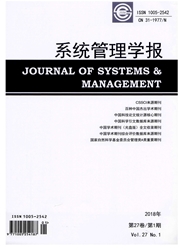

 中文摘要:
中文摘要:
研究了缺货时部分需求流失情况下,零售商和供应商之间的供应链模型,零售商和供应商合作满足一种较短生命期的商品的随机需求,缺货时部分需求流失,零售商采用部分延迟订货策略提高自己的利润。分析了整体供应链的最优订货数量和分散供应链零售商的最优订货数量,以及这2种情况下的服务水平。剖析了纵向竞争对供应链效率产生的负面影响。对于供应商处于主导地位设定供货价格时,得出了零售商订货数量和供货价格之间的Stackelberg均衡。
 英文摘要:
英文摘要:
A Supply Chain Model is developed when partial demand is lost while stocking out. Random demand of a single product with a short lifecycle is satisfied by a retailer and a supplier. When stock-out happens some demand will be lost. Retailer adopts a partial backorder policy to improve his profit level. Optimal quantity decisions are analyzed between integrated supply chain and a decentralized one. Service levels in these two situations are respectively developed. Vertical competition under exogenous random demand has a negative effect on the supply chain: the retailer orders less and the service level decreases. When the supplier is a leader and set the wholesale price to the retailer, a Stackelberg equilibrium is reached between order quantities of the retailer and the wholesale price of the supplier.
 同期刊论文项目
同期刊论文项目
 同项目期刊论文
同项目期刊论文
 期刊信息
期刊信息
